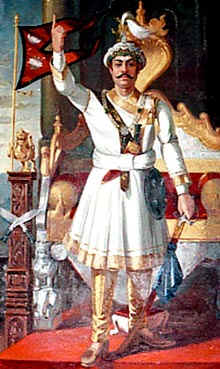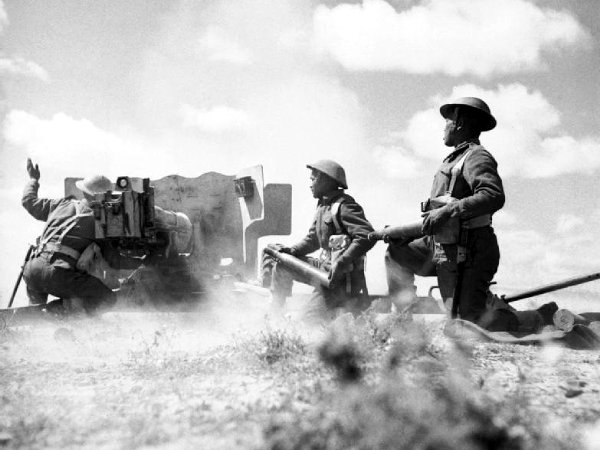A couple of months ago I reported on my progress with the book I’m writing about my journey from hill walker to Everest summiteer, and I described how I planned to chop the gargantuan 180,000 words I’d written for the first draft down to a more readable 120,000. I’m going through this process now, and in addition to the really bad jokes much of the text I’m getting rid of is historical background about the peaks I climbed and places I travelled, content that provides an interesting backdrop but isn’t essential to the flow of the story.

Instead of hitting the delete key and consigning all of it to the waste basket I thought some of it would be good to rework into blog posts, since I’m frequently writing about mountaineering history here, so some of you might be interested. And remember, if you like what you read here, the text I decided to leave in the book will be even better.
The book contains a chapter on high altitude trekking, much of which centres around Nepal, a country that was isolated from the outside world for much of its history, but has since become very much the go-to destination for Himalayan trekking and mountaineering. What happened to cause such a reversal in a relatively short period of time? First it’s necessary to delve further back into Nepal’s history.
Once a collection of warring states, the Kingdom of Nepal came into being as a single state in 1769, when Prithvi Narayan Shah, the Raja of Gorkha, conquered his neighbours and defeated the Malla kings of Kathmandu to form an amalgamated single kingdom. He became Nepal’s very first king, and legend has it he forged a poisoned chalice for future generations of rulers, though it’s hard to see how he can be blamed. As he approached Kathmandu with his armies he passed a sadhu (or holy man) on the trail who asked him for a bowl of curd. Not one to shirk his religious duties, Prithvi Narayan Shah presented the food, but the sadhu’s table manners proved a little rustic. After he finished eating he vomited his meal into a cup and offered it to the Raja to drink. Understandably, Prithvi Narayan Shah wasn’t altogether delighted with the sadhu’s gratitude; he grabbed the cup out of the sadhu’s outstretched hands and threw the contents back at him. This may not have been the politest thing he could have done, but if this was churlish the sadhu’s reaction was even more so. He was furious, and stood up to curse the Raja in front of his followers.
“If only you had swallowed your pride and drunk the curd, I could have granted your every wish,” he proudly boasted, doing what many drunk men have done before and since by trying to look dignified while caked in vomit. “Instead I will send you a curse. You will go on to conquer Nepal, but your family will rule for only ten generations. At the end of the tenth generation the Shah kings will be no more.”

While this clearly sounds like beer talk to you and me, amazingly the sadhu’s words ended up coming true. On 1 June 2001, Crown Prince Dipendra walked into the Royal Palace in Kathmandu and shot dead his father King Birendra, his mother Queen Aishwarya, his sister Princess Shruti, his brother Prince Nirajan, and five other members of his family, before turning the gun on himself. His uncle Gyanendra was away from Kathmandu at the time and was crowned king, but he reigned for only seven years before Nepal’s volatile political situation moved on. In 2008 Gyanendra was deposed and the monarchy abolished. They had been the 10th generation of Shahs to rule Nepal.
Things were less than smooth before that. Prithvi Narayan Shah’s son and successor Pratap Singh managed to produce a son by his wife Queen Rajendra Laxmi, but then absent-mindedly took a second wife Maiju Rani who was of the wrong caste (the Hindu equivalent of using the wrong handshake) and made her pregnant. This wasn’t ideal for the succession, and it wasn’t helped by the king spending much of his time indulging in sexual tantric rites with his second wife under the influence of opium. Luckily Pratap Singh died of smallpox before the second child was born. Queen Rajendra Laxmi allowed her rival to give birth, but then made her perform sati (or burn herself to death). This more or less set the tone for the rest of the Nepalese succession. Pratap Singh’s second son, Sher Bahadur Shah, ended up murdering his first one, Rana Bahadur, with a sword during a royal audience many years later, before being strangled to death by a kazi called Bal Narsingh Konwar (that’s a royal bodyguard, rather than a euphemism for a toilet). A descendant of the kazi, Jung Bahadur Konwar, seized power in 1846 following another infamous royal massacre known as the Kot Massacre, which saw 30 members of the Nepalese aristocracy slain. He started up a new dynasty, the Rana Dynasty, who became Nepal’s hereditary prime ministers. The Ranas were effectively rulers of Nepal until 1951, and the Shah royal family lived through this period as little more than a puppet monarchy.
As you can see, the history of the Nepalese royal family is a colourful one which rather puts the troubles of the British royal family – who mainly have to worry about the paparazzi taking long range photographs of them with their tits out – into context.
For most of its history Nepal remained in isolation behind the natural defences of the Himalayas, and its rulers were content to avoid communication with the outside world. While the British were exploring the high peaks of the Himalayas throughout their Indian empire – in Kashmir and Baltistan in the west, and Darjeeling and Sikkim in the east – and gaining permission from the Tibetan government to approach Everest from the north, Nepal’s borders, containing some of the jewels of the Himalayas, remained firmly closed.

The situation began to change in the 1940s, slowly at first, but eventually in a tidal wave that brought the Shah King Tribhuvan back to power in 1951. Sherpas had been bringing western ideas into Nepal from Darjeeling for many years as more and more of them accompanied foreign mountaineering expeditions, but this process intensified as Gurkha soldiers who fought for the British Army in the Second World War returned to Nepal. A Nepali Congress Party was founded in exile in India in 1946, and the British Empire, which had been content to cushion Nepal from the south, was about to end as India pushed towards independence in 1947. In the north China was on the verge of a Communist revolution that would eventually lead to them invading Tibet in 1950. The Ranas probably felt a bit like homo erectus looking out of his cave after skinning a buffalo, and seeing people in full body cow hides building an asphalt highway across the prairie and herding all the woolly mammoths into cages for transporting to a zoo. They needed to make tentative steps to end their isolation, and this didn’t just mean talking to foreign diplomats abroad. One step in this process involved opening Nepal’s borders and letting people in.
At first they decided to welcome a few scientists. In 1947 an ornithologist called Dillon Ripley, assistant curator at the Peabody Museum of Natural History, Yale University, led an expedition to the Kathmandu Valley to catalogue Nepal’s bird species. The following year he was allowed to explore far west into the Karnali Valley and east into the Arun Valley. In 1948 a party of Indian scientists were permitted to explore the Kosi Valley, and Dr Arnold Heim of Zurich was allowed to fly into Nepalese airspace to photograph Annapurna and Dhaulagiri for scientific purposes. Finally in 1949 the Ranas decided to allow mountaineers in to explore, as long as they were accompanied by scientists.
Nepal’s very first trekking tourist was a man famous for believing science should play as much part in mountaineering expeditions as nude mud wrestling (though he didn’t state it in quite these words). The whiskers on his moustache would have bristled at the thought of inviting a scientist, but the lure of being the first foreigner to explore the Nepal Himalaya was too much to resist.
In a later post I will be introducing you to the great Himalayan explorer Bill Tilman.
If anyone is interested in learning more about Nepal’s turbulent history I recommend Jonathan Gregson’s Blood Against The Snows. While it concentrates on the events surrounding the 2001 palace massacre it contains quite a bit of early Nepalese history as well.







Hi Mark,
I have been reading through your blogs and enjoy the information that you are providing in regards to trekking in Nepal.
I am departing to Nepal at the start of April with all my own kit for a couple of good 6-8 day treks.
I have 25 days in total before I fly out.
I am a firm believer, as you have said, that getting off the beaten track gives you so much more of an experience than having to travel with/along side a group.
I like the idea of rhododendron forests river crossings etc.
If you could throw a couple of ideas my way to what you would be doing if you were in the same situation as me, that would be much appreciated.
Regards
Angus
Hi Angus,
Here are some ideas if you want to get off the beaten path: https://www.markhorrell.com/blog/2012/5-off-the-beaten-path-treks-in-nepal/.
However, if you are carrying all your own kit you may want to stick to the more common routes where tea house food and accommodation is readily available. This usually means the Everest region, Annapurnas or Langtang, although I understand tea houses on the Manaslu Circuit have improved a lot since I was there in 2011: https://www.markhorrell.com/blog/2011/is-the-manaslu-circuit-the-new-annapurna-circuit/.
I would also recommend a single long trek rather than several shorter ones to give yourself time to reach the more remote areas.
Regards,
Mark.
Hi Mark,
I am reading, and loving, your book. My own Everest aspirations seem somehow more realistic now! Having lived, travelled and trekked all over the world, until now I have somehow not made it to the Himalayas, and have finally planned a 2-3 month sabbatical this Oct-Dec.
What would you recommend to a first-time-Himalaya trekker, but someone with a highly developed sense of adventure and who isn’t a big fan of “tourist treks” or organised groups?! After having enjoyed Mt Kenya and Kilimanjaro, I’m thinking about attempting a summit on Mera, which I realise would necessitate a more organised trip – but with plenty of time – and hoping to visit Tibet and maybe Bhutan as well – I’m trying to investigate other plans as well. There’s a huge amount of information out there, but not a lot of independent opinion that I can find – mostly outfitters trying to sell their treks…
Would it be a mistake to stay in the Everest/Annapurna areas and not explore the less-visited parts up West?
Congrats on the book – it’s just the sort of funny and relatable account I was looking for!
Tess
Hi Mark, thank you for putting in your efforts to produce some very interesting and significant pieces. I was wondering if you could also add references/bibliography? I’m sure a lot of us will be interested in the literature you have been referring to while stating some historical facts and the like.
The source is mentioned at the bottom of the post (Blood Against the Snows by Jonathan Gregson). There is also a full bibliography at the back of Seven Steps from Snowdon to Everest.